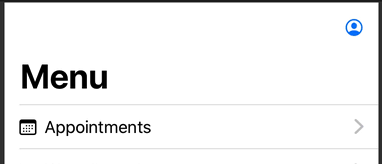Using SwiftUI, I've built a NavigationView that takes the user to another NavigationView, and finally, to a simple View. When I get to the last view, I can see two back buttons and a very large Navigation Bar.

I'd like to have a navigation structure similar to the iOS Settings app, where one navigation list takes to another and each of them have one back button that goes back to the previous screen.
Does anyone know how to solve this?
SwiftUI's NavigationLink has a second initializer that has an isActive parameter, allowing us to read or write whether the navigation link is currently active. In practical terms, this means we can programmatically trigger the activation of a navigation link by setting whatever state it's watching to true.
The . navigationBarBackButtonHidden(true) will hide the back button.
You should only have one NavigationView in your view hierarchy, as an ancestor of the menu view. You can then use NavigationLinks at any level of the hierarchy under that.
So, for example, your root view could be defined like this:
struct RootView: View { var body: some View { NavigationView { MenuView() .navigationBarItems(trailing: profileButton) } } private var profileButton: some View { Button(action: { }) { Image(systemName: "person.crop.circle") } } } Then your menu view has NavigationLinks to the appropriate views:
struct MenuView: View { var body: some View { List { link(icon: "calendar", label: "Appointments", destination: AppointmentListView()) link(icon: "list.bullet", label: "Work Order List", destination: WorkOrderListView()) link(icon: "rectangle.stack.person.crop", label: "Contacts", destination: ContactListView()) link(icon: "calendar", label: "My Calendar", destination: MyCalendarView()) }.navigationBarTitle(Text("Menu"), displayMode: .large) } private func link<Destination: View>(icon: String, label: String, destination: Destination) -> some View { return NavigationLink(destination: destination) { HStack { Image(systemName: icon) Text(label) } } } } Your appointment list view also contains NavigationLinks to the appointment detail views:
struct AppointmentListView: View { var body: some View { List { link(destination: AppointmentDetailView()) link(destination: AppointmentDetailView()) link(destination: AppointmentDetailView()) }.navigationBarTitle("Appointments") } private func link<Destination: View>(destination: Destination) -> some View { NavigationLink(destination: destination) { AppointmentView() } } } Result:

If you love us? You can donate to us via Paypal or buy me a coffee so we can maintain and grow! Thank you!
Donate Us With